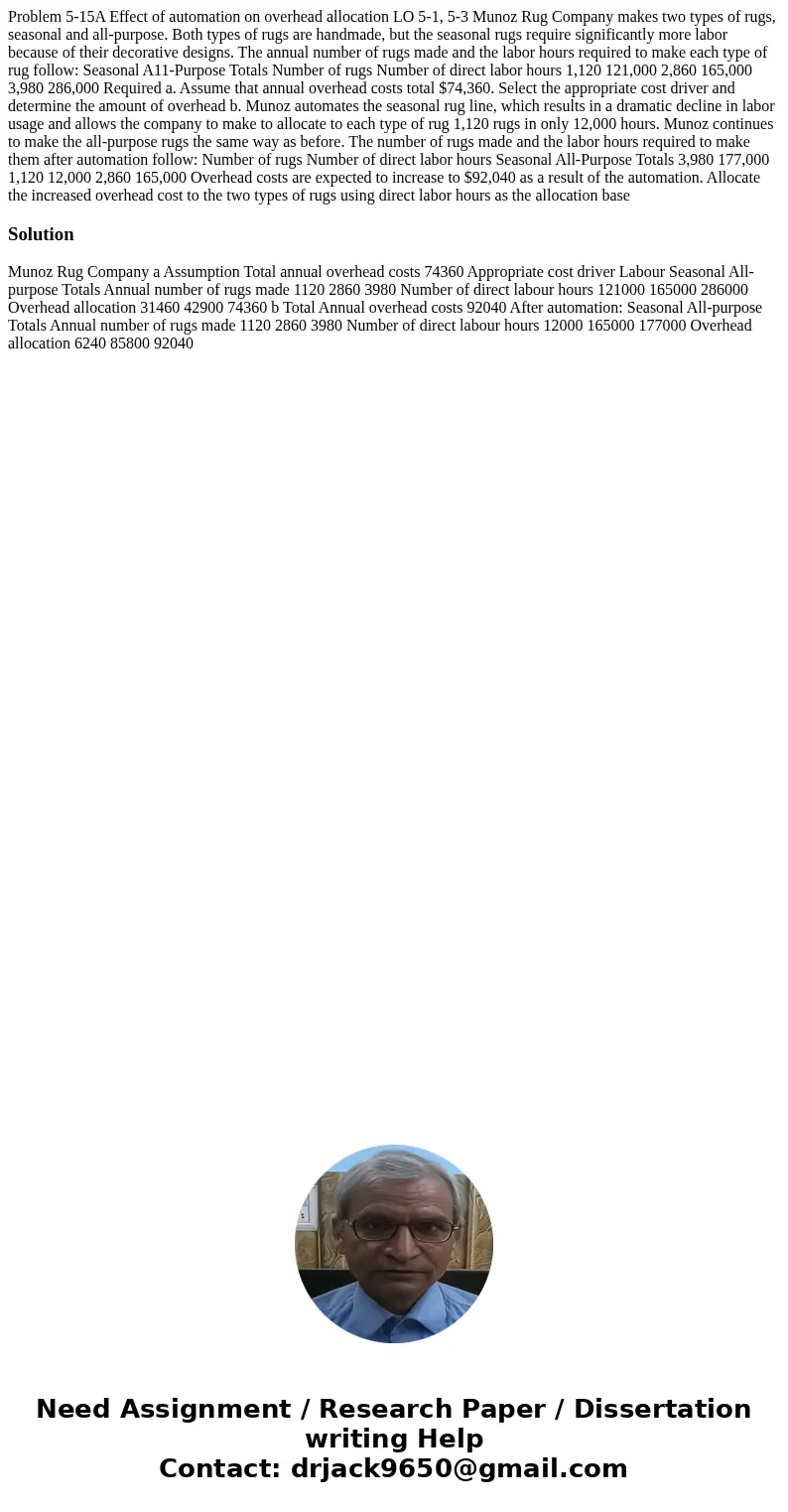Problem 515A Effect of automation on overhead allocation LO
Problem 5-15A Effect of automation on overhead allocation LO 5-1, 5-3 Munoz Rug Company makes two types of rugs, seasonal and all-purpose. Both types of rugs are handmade, but the seasonal rugs require significantly more labor because of their decorative designs. The annual number of rugs made and the labor hours required to make each type of rug follow: Seasonal A11-Purpose Totals Number of rugs Number of direct labor hours 1,120 121,000 2,860 165,000 3,980 286,000 Required a. Assume that annual overhead costs total $74,360. Select the appropriate cost driver and determine the amount of overhead b. Munoz automates the seasonal rug line, which results in a dramatic decline in labor usage and allows the company to make to allocate to each type of rug 1,120 rugs in only 12,000 hours. Munoz continues to make the all-purpose rugs the same way as before. The number of rugs made and the labor hours required to make them after automation follow: Number of rugs Number of direct labor hours Seasonal All-Purpose Totals 3,980 177,000 1,120 12,000 2,860 165,000 Overhead costs are expected to increase to $92,040 as a result of the automation. Allocate the increased overhead cost to the two types of rugs using direct labor hours as the allocation base 
Solution
Munoz Rug Company a Assumption Total annual overhead costs 74360 Appropriate cost driver Labour Seasonal All-purpose Totals Annual number of rugs made 1120 2860 3980 Number of direct labour hours 121000 165000 286000 Overhead allocation 31460 42900 74360 b Total Annual overhead costs 92040 After automation: Seasonal All-purpose Totals Annual number of rugs made 1120 2860 3980 Number of direct labour hours 12000 165000 177000 Overhead allocation 6240 85800 92040
 Homework Sourse
Homework Sourse